How to use vaporwave art in your next video project (and why you should)
Create a stunning vaporwave video with Wondershare for your chance to win $200
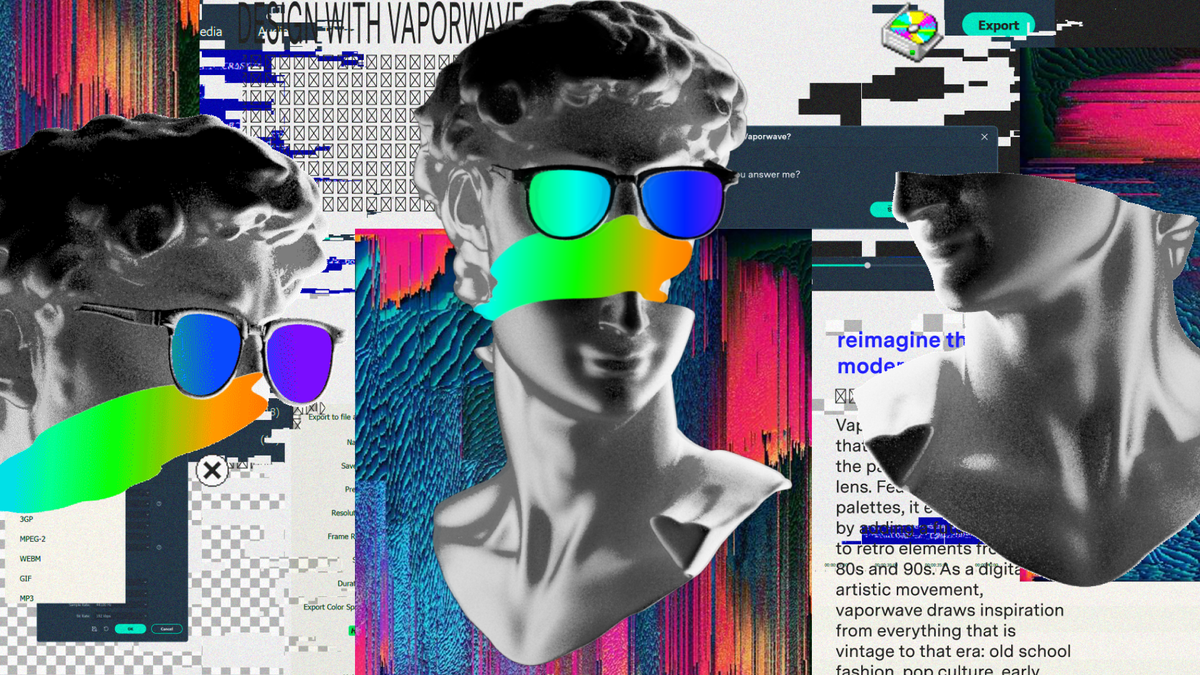
"Vaporwave is like someone that lives in a dystopian future finds a ton of old VHS tapes and is lonely because he's the only remaining person in the world but he is also…floating in the sky in Japan."
FrankJavCee, YouTuber
"Vaporwave is like someone that lives in a dystopian future finds a ton of old VHS tapes and is lonely because he's the only remaining person in the world but he is also…floating in the sky in Japan." — FrankJavCee, YouTuber
Nostalgia and surrealism. Pastel colours and clashing pixel art. A collection of distorted memories, disparate visual styles, and pop culture elements. These elements together define the retro futuristic vaporwave, quite possibly one of the most unusual genres born out of Internet subculture. Originating in the depths of websites like Tumblr, Reddit, and 4Chan, Vaporwave originally began as a musical style.
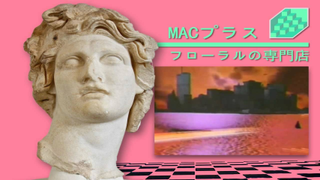
It was a bizarre mix of 70s and 80s music, smooth jazz, lounge music, and chiptunes, a sort of chaotic mishmash that defied explanation. Of the early participants in the artistic movement, Ramona Andra Xavier — a Portland-based artist known as Vektroid — is one of the most important. Her 2011 album Floral Shoppe served as the foundation for the modern vaporwave aesthetic, and is widely regarded as the defining album of the genre.
Vaporwave in popular media
Despite its countercultural bent and anticapitalist origins, vaporwave has made a significant splash in popular media over the years. Tumblr is perhaps the most significant example. As one of the digital locales that first gave birth to the genre, the social network has long adopted visual elements of vaporwave into its marketing and branding. MTV did something similar in 2015 as well, with the launch of I AM MY MTV.
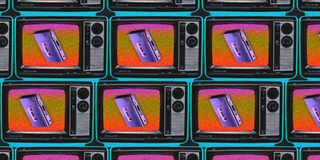
Interestingly enough, Tumblr is still a locus of vaporwave artwork and design, with multiple blogs regularly sharing their artwork. The most prolific of these, Kidmograph, has worked on high profile projects for the likes of Facebook, Apple, and Gucci. Elements of vaporwave have also begun to pop up in the NFT market as well, with mixed success.
Finally, the past several years have given rise to multiple vaporwave fashion brands, each of which puts its own unique spin on the genre's artistic style. Vapor95 is undoubtedly the largest of these, though it has multiple competitors in the form Palm Treat, Neon Talk, Pink Dolphin, and Virtual Plaza. Each of them shares with one another the visual hallmarks of the vaporwave style:
- Liberal use of imagery from old-school operating systems such as Windows 95.
- Visual elements from anime, early 90s web design, and glitch art.
- Aspects of Greco-Roman architecture.
- Surreal, chaotic visual compositions that frequently lack both rhyme and reason.
- Superimposing mundane, everyday objects into oversaturated visual landscapes.
More recently, multiple popular shows have adopted some of vaporwave's visual elements, including Love, Death & Robots, Maniac, and Black Mirror. Vaporwave also featured in a 2017 Spotify series known as RapCaviar Pantheon.
How to use vaporwave in your own projects
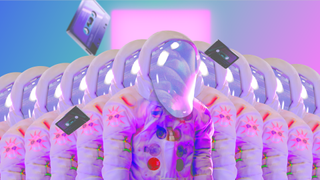
If you've noticed a running theme here, it's that there's really no wrong way to do vaporwave — though trying to use it for NFTs or as a corporate marketing tool is pretty close to it.
Vaporwave is about melancholic reminiscence. For some, that means remembering your first taste of bubblegum, the first time you rented a video game from Blockbuster, the first time you stayed over at a friend's house. For others, it means fond memories of a life they never lived, nostalgia for a time that ended before they were born.
"It’s pastel nihilism that revels in a world made up of technology both forgotten and familiar…It’s a bad graphic design that’s kind of good but in a like… ironic way, ya know?"
"At its heart, Vaporwave is the crossroad of gaudy-glam meets yuppie criticism of the overly-indulgent upper-middle-class idea of luxury— think palm trees, pyramids, and alabaster statues…" reads a blog published by marketing agency nativ3. "It’s pastel nihilism that revels in a world made up of technology both forgotten and familiar…It’s a bad graphic design that’s kind of good but in a like… ironic way, ya know?"
So our advice? If you want to create vaporwave art, just do it. You might even consider using Wondershare.
#CreatewithWondershare
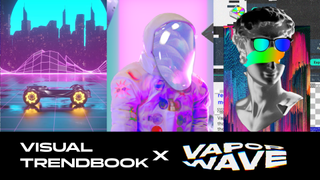
Wondershare aims to inspire and help creators of all stripes level up their videos through filmstock packs and powerful editing software. That's why, to commemorate the launch of the first edition of the Wondershare Visual Trendbook, the company is hosting the #CreatewithWondershare challenge. The theme, as you've probably guessed, is vaporwave.
To that end, the company is providing multiple creative vaporwave elements for creators to use in their video, including effect packs, visual effects, filters, and transitions. Users who create and share content using these elements will have a chance to win a $200 creative fund. They'll also have an opportunity to feature on Wondershare's social media and collaborate with Wondershare as an ambassador or freelance contractor.
Wondershare has been building tools for creators and artists for nearly 20 years and are using that experience to inspire and equip artists to make their best work. Its products are built to be intuitive, allowing anyone to create impressive, professional-looking video content — regardless of skill level. Some of Wondershare's most popular products include:
Filmstock. A stock library of high quality, trendy video content for creators in every genre. With more than 400 video effects packs, over 70,000 royalty-free stock images and more than 1,700 music files, there’s something for everyone.
Filmora. A powerful and intuitive video editor for creators of all skill levels. You can easily create impressive and captivating videos using Filmora. Find all the resources and advanced features that you need to elevate the quality of your video content.
DemoCreator. Perfect for the “How-To” video creators, DemoCreator offers a full range of tools to create the perfect video tutorial including screen recording with real-time screen drawing, an AI avatar presenter, speech recognition, automated captions, and more.
Anireel. Looking to quickly and easily create animations to pump up your explainer videos? Anireel includes easy-to-use animation tools, a powerful character builder, a text-to-speech engine, lip syncing, and more.
Get the Creative Bloq Newsletter
Daily design news, reviews, how-tos and more, as picked by the editors.
The Creative Bloq team is made up of a group of design fans, and has changed and evolved since Creative Bloq began back in 2012. The current website team consists of eight full-time members of staff: Editor Georgia Coggan, Deputy Editor Rosie Hilder, Ecommerce Editor Beren Neale, Senior News Editor Daniel Piper, Editor, Digital Art and 3D Ian Dean, Tech Reviews Editor Erlingur Einarsson, Ecommerce Writer Beth Nicholls and Staff Writer Natalie Fear, as well as a roster of freelancers from around the world. The ImagineFX magazine team also pitch in, ensuring that content from leading digital art publication ImagineFX is represented on Creative Bloq.
